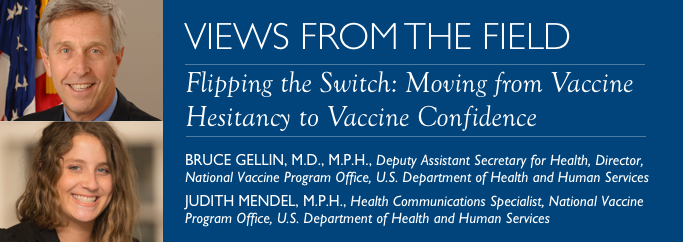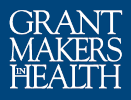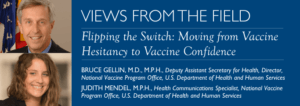
The 2014-2015 Disneyland-associated measles outbreak was a wake-up call—alerting the public health community to the brittle balance between vaccine-induced population immunity and the potential for widespread, costly and potentially deadly outbreaks of vaccine-preventable diseases. When parents doubt vaccines and the number of inadequately vaccinated children grows, it puts individual and public health in peril. Some parents actively delay or decline some, many, or all recommended vaccines based on their perception that doing so is somehow “safer” than the evidence-based recommendations that are the foundation of the childhood immunization schedule. Driven by a sense of precaution, they are leaving their children and those who cannot be vaccinated susceptible to life-threatening diseases. Similarly, use of scientifically unvalidated alternative vaccine schedules compounds the threat of vaccine-preventable diseases and adds to outbreak potential.
While total refusal of all vaccines by parents of young children is rare (<1 percent) (Hill et al. 2016), selective refusal (15 percent) or delay (27 percent) of one or more recommended vaccines occurs more frequently (Gilkey et al. 2016). Health care providers trying to honor patient-centered decision making are on the front line of this divisive issue, often confronted by parent doubts and concerns about the need for and safety of vaccines. A national survey of pediatricians found that 87 percent had requests from parents for an alternative vaccine schedule (Hough-Telford et al. 2015).
Clearly, the emergence of “vaccine hesitancy” as an increasingly common theme in health care settings demands attention—and flipping the switch from vaccine hesitancy to vaccine confidence is a necessary and critical step to protect the public’s health moving forward.
ADDRESSING VACCINE HESITANCY IMPROVES INDIVIDUAL AND PUBLIC HEALTH
Vaccines are estimated to save 2 to 3 million lives worldwide each year (Delaney et al 2014). Smallpox has been eradicated and polio, measles, and rubella are close to global elimination. There are even vaccines to prevent cancers caused by hepatitis B and human papillomaviruses. What were once referred to as the usual diseases of childhood are now broadly known as vaccine-preventable diseases. These monumental successes have contributed to a false perception that the disease threats are minimal and that routine childhood vaccination is no longer necessary.
There are many reasons why addressing these issues is important:
- Hesitancy around vaccines leads to vaccine delays or refusals, and children and those who cannot be vaccinated are left susceptible to life-threatening diseases.
- The substantial protection that individuals and communities, including daycares and schools, get from vaccination is dependent on the vast majority of children being vaccinated.
- High vaccination coverage protects children too young to be vaccinated and those who cannot be vaccinated due to medical conditions.
- Infectious diseases know no borders and communities are at risk when infectious diseases spread quickly across the globe.
National data show high childhood immunization rates, but state and community-level data from across the country tells a potentially different story. For example, in 2015-2016 state-level nonmedical vaccination exemption rates were 6.3 percent in Oregon, 6.1 percent in Idaho, and 5.9 percent in Alaska, but some county and school vaccination exemption rates were substantially higher. A Washington state study found county-level exemption rates up to nearly 27 percent. In Michigan, 23 locales were identified as having high levels of vaccination exemptions, which placed these communities at greater risk of disease (Omer et al. 2009).
When vaccine-preventable disease outbreaks occur, the social and financial burden facing families includes health care costs, and the fact that parents may need to stay home to care for a child kept out of school until they are no longer contagious. For example, the 2014-2015 Disneyland measles outbreak spanned seven states with around 130 known cases. California, where the outbreak began, estimated the state incurred $1.5 to $4.0 million in managing the outbreak.
ROLE OF THE U.S. DEPARTMENT OF HEALTH AND HUMAN SERVICES
The U.S. Department of Health and Human Services (HHS) has recognized the importance of understanding vaccine confidence, which refers to the trust that parents, patients, or providers have in the vaccines themselves, those who administer them, and the systems involved in vaccine research, development, licensure, and recommendations. In a 2015 report to the Assistant Secretary for Health, the National Vaccine Advisory Committee (NVAC) noted that achieving high parent and health care provider acceptance of all vaccine recommendations requires continued and expanded efforts on multiple fronts, including:
- measuring and tracking vaccine confidence,
- communication and community strategies,
- health care provider strategies,
- policy strategies, and
- continued support and monitoring.
Since the release of the NVAC report, the National Vaccine Program Office within HHS has led the effort to implement, or facilitate implementation of, the NVAC recommendations.
OPPORTUNITIES FOR GRANTMAKERS
The current level of understanding and the state of vaccine confidence research are in the early stages. While much is known about the beliefs and attitudes of parents who lack confidence in childhood vaccines, little is known about how to effectively address those beliefs. The root causes of vaccine hesitancy are often community and culture-based. Therefore, there is a need for local understanding of the factors that contribute to vaccine hesitancy and vaccine acceptance.
Measuring and tracking vaccine confidence: The 2015 NVAC report identifies specific opportunities where support is needed to reduce vaccine hesitancy, build vaccine confidence, and ultimately strengthen parents’ acceptance of childhood vaccines. The domain of measuring and tracking vaccine confidence is an area where strategic support can make a big difference. As this field matures, there is a great need for reliable, valid, and easy to use vaccine hesitancy and confidence measures. Having such measures would enable immunization programs and providers to assess and monitor parent hesitancy or confidence over time, identify communities where confidence is low or decreasing, and respond faster in places where immunization rates threaten individual and community health. In addition, these measures would assist in the development and evaluation of interventions. Ultimately, reliable and valid measures of vaccine confidence could become part of the nation’s childhood vaccination assessment efforts.
Communication and community strategies: Investments in the development and testing of communication and education materials, messages, and approaches designed to reduce vaccine hesitancy and/or increase confidence in vaccines are needed. New insights into how to best address parents’ concerns and reluctance are needed, particularly in light of the many communication channels available and used to find health-related information. Understanding more about the drivers of vaccine decision-making, or the types of communication strategies that should be used with parents who have doubts, would be of great value to health care providers and immunization programs at federal, state, and local levels.
Health care provider strategies: Health care providers’ engagement, guidance, and endorsement are consistently cited as factors that greatly influence vaccination decision-making. With this in mind, it is essential that all health care providers—doctors, nurses, and others—have the skills and resources to better anticipate and effectively address patient and parent questions and concerns. Unfortunately, a recent review of face-to-face interventions for addressing vaccine hesitancy found studies of their effects to be of low quality and generally lacking in impact (Kaufman et al. 2013). Support for efforts to strengthen health care provider vaccination-related training, the development and assessment of education and information resources to assist in vaccine-related education, or foster the use of tailored, interpersonal vaccination-related parent education and dialogue are needed.
Policy strategies: Support is also needed for research on how best to use policy approaches to address vaccine hesitancy or strengthen vaccine confidence. Policies like school entry requirements are often used to ensure high vaccination rates, but relatively little research has examined if such approaches could foster confidence in vaccination.
Investments toward understanding, tracking, and addressing vaccine hesitancy, and fostering vaccine confidence and acceptance are essential. The success of vaccines has made many vaccine preventable diseases less prevalent, less visible, and to a potentially growing number of parents, seemingly less necessary. Newer vaccines that address significant health issues, such as cancer caused by human papillomaviruses, remain underutilized. Without advancing our understanding and ability to address vaccine hesitancy, new vaccines—including those for emerging infectious diseases like Zika and Dengue—may be met with considerable doubt and reluctance, thus limiting their value and use. Government public health agencies are supporting efforts to reduce vaccine hesitancy and strengthen confidence, but the involvement and support of foundations, corporations, and other organizations are needed to achieve greater success sooner.
REFERENCES
Public Health Reports. Assessing the State of Vaccine Confidence in the United States: Recommendations from the National Vaccine Advisory Committee. November 2015. https://www.hhs.gov/sites/default/files/nvpo/nvac/reports/nvac-vaccine-confidence-public-health-report-2015.pdf
Delany I., R. Rappuoli, and E. De Gregorio. “Vaccines for the 21st Century.” EMBO Molecular Medicine. May 6, 2014. https://www.ncbi.nlm.nih.gov/pubmed/24803000
Gilkey M., A. McRee, B. Magnus, P. Reiter, A. Dempsey, and N. Brewer. “Vaccination Confidence and Parental Refusal/Delay of Early Childhood Vaccines.” Plos ONE. July 8, 2016. https://journals.plos.org/plosone/article?id=10.1371/journal.pone.0159087
Gust D., N. Darling, A. Kennedy, and B. Schwartz. “Parents with doubts about vaccines: which vaccines and reasons why.” Pediatrics. October 2008. https://pediatrics.aappublications.org/content/122/4/718
Harriman, Kathleen. “California Department of Public Health Presentation to the National Vaccine Advisory Committee.” Washington, D.C. June 9, 2015.
Hill H., L. Elam-Evans, D. Yankey, J. Singleton, and V. Dietz. “Vaccination Coverage Among Children Aged 19-35 Months – United States, 2015.” MMWR: Morbidity & Mortality Weekly Report. October 7, 2016. https://www.cdc.gov/mmwr/volumes/65/wr/mm6539a4.htm
Hough-Telford C.T., D. Kimberlin, and K.G. O’Connor. Vaccine refusals and requests for alternative vaccine schedules (AVS): national surveys of pediatricians. July 26, 2015. Documenting Parental Refusal to Have Their Children Vaccinated
Kaufman J., A. Synnot, R. Ryan, et al. “Face-to-face interventions for informing or educating parents about early childhood vaccination.” Cochrane Database Systematic Reviews. May 31, 2013. https://www.ncbi.nlm.nih.gov/pubmed/23728698
Omer S., D. Salmon, W. Orenstein, M. deHart, and N. Halsey. “Vaccine Refusal, Mandatory Immunization, and the Risks of Vaccine-Preventable Diseases.” New England Journal Of Medicine. May 7, 2009. https://www.nejm.org/doi/full/10.1056/NEJMsa0806477#t=article

